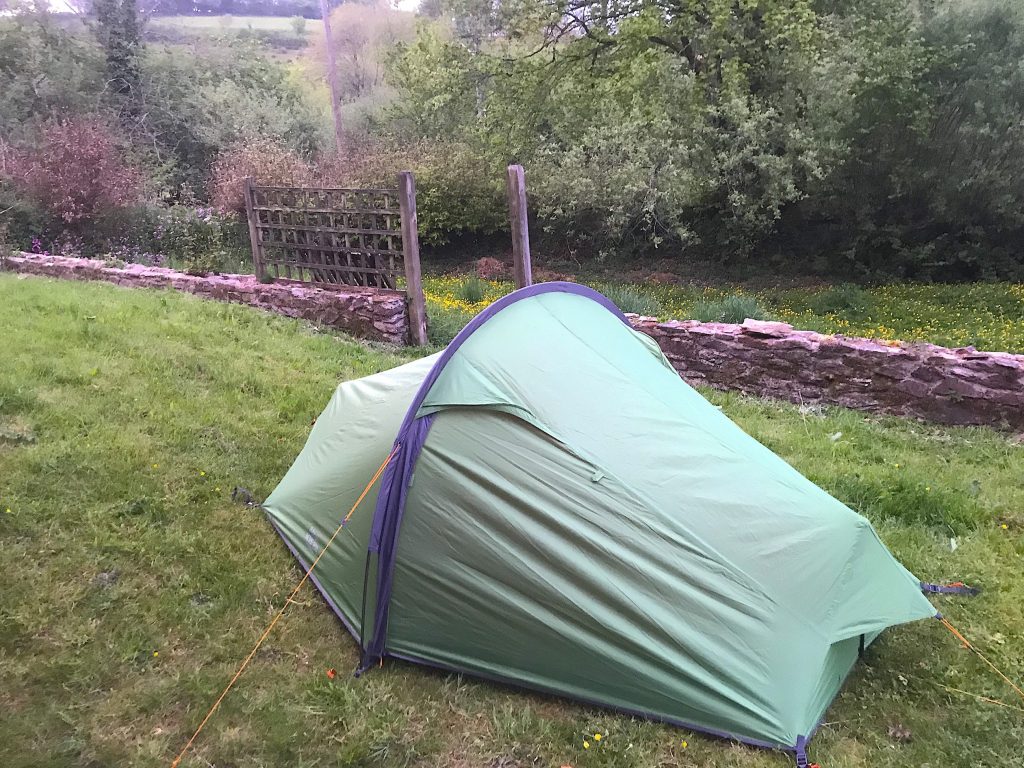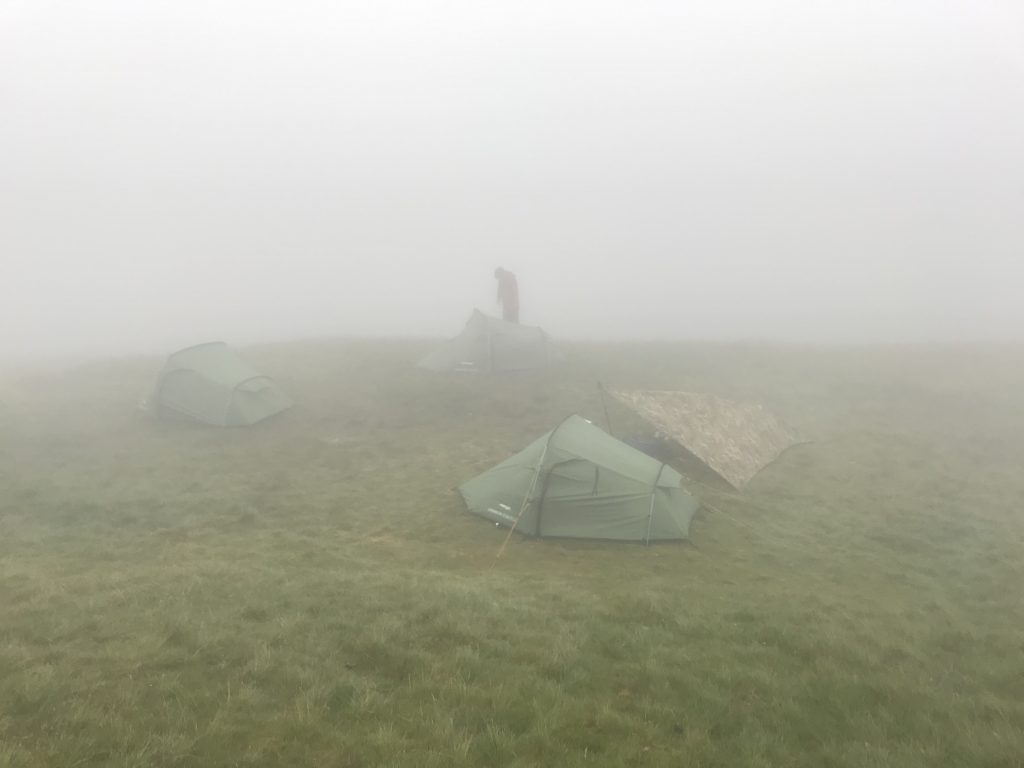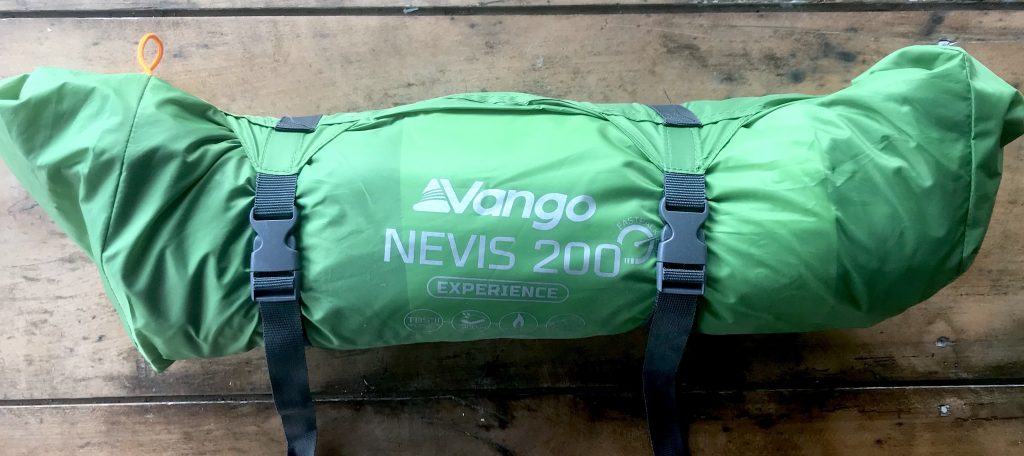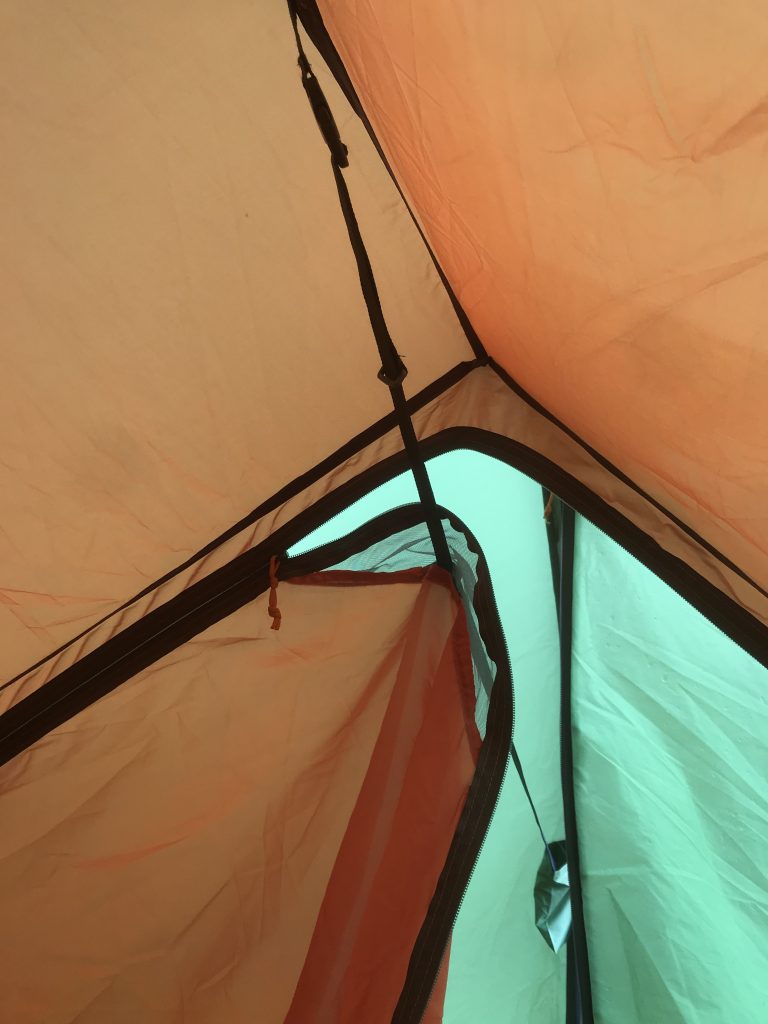

Vango’s Nevis and Banshee tent ranges are some of their most popular, and with good reason. Both are sturdy and relatively inexpensive, and both offer good protection from the elements. The variants of this range that I have used are the Vango Nevis 200 (my favourite) and the Vango Banshee 300. The question of ‘which is better – Nevis vs Banshee’ is a very hard one to answer. I will compare them, based on my own personal experience.
Comparison
Vango Nevis vs Banshee
| Nevis | Banshee | |
| RRP (for 200 version) | £110 | £150 |
| Packed Weight (for 200 version) | 2.02kg | 2.39kg |
| Flysheet Hydrostatic Head | 3,000mm | 5,000mm |
| Groundsheet Hydrostatic Head | 6,000mm | 6,000mm |
| Pitches | Together / Outer First | Together / Outer First |
| Flysheet vents | 2 vents, none adjustable | 3 vents, 2 adjustable |
| Pitch time (advertised) | 5 minutes | 7 minutes |
| Doors | 2 | 2 |
| Vestibules | 1 | 1.5* |
| Vestibule has groundsheet? | No | No |
Nevis
Full review: Vango Nevis 200 Review
Vango website: Vango Nevis 200
The Vango Nevis 200 is my current favourite tent. It is inexpensive, spacious and holds up well in weather. It also provides more headroom than I’ve ever seen in a 1-person tent. The Nevis 200 is advertised as a 2-person tent, but really you’d struggle with any more than 1.
Banshee
Full review: Vango Banshee 300 Review
Vango website: Vango Banshee 300
The Vango Banshee tent series is great. The version I’ve used, the 300, is advertised for 3 people, but really wouldn’t be comfortable with more than 2. Its length is good, but its headroom, compared to the Nevis especially, is lacking. I’m fairly tall, so this is a big issue for me.
Nevis vs Banshee
I will go through various aspects of each tent range, comparing them.
Pitching
The Nevis may well take less time to pitch than the Banshee, but it is a complex operation. The Banshee goes up very easily, and the only real mistake that can be made is getting the poles the wrong way round: one is longer than the other. With the Nevis, the poles aren’t an issue, but getting the tension even is a challenge. I sometimes have to move pegs several times before getting the tension right and the tent looking nice. Having a ‘nice-looking’ tent is more than just vanity: odd creases make it flap about in wind and can actually damage the tent too.
The Banshee is best pitched with the small end into the wind, and the Nevis can be pitched either way round as it’s almost symmetrical. I’ve found, however, that pitching it with the doors downwind means that rain cannot be blown in under the door protector flaps, which could help in really bad weather. Pitching with the doors downwind also gives you a sheltered space to cook, even with the door open – watch out with this though, as tents are flammable…
Packing
As I’ve mentioned several times on this site, I always separate the inner and outer of my tent before packing it away. The reason is very simple: if the outer is wet and I pack them together, the water will seep through to the inner over the course of a day, and I’ll end up sleeping in a soggy tent.
Packing the inner and outer separately increases pitch (setup) and strike (packing) times, but it is worth it. The Nevis 200 packs into a roll that is 46cm long by 15cm across, but it’s possible to do better than that thanks to the fastpack bag (again, see my review). The Banshees are a bit bulkier, the 200 at 46cm x 16cm – and in my experience you really can’t pack them much smaller.

Inside
Because of its tunnel design, the Nevis is much more spacious than the Banshee. The Banshee is wider and flatter, while the Nevis is taller and narrower. As I mentioned, this makes it better for me. The Banshee has one full vestibule between the fly and inner doors on one side, as well as the space under the fly at the head end of the tent – accessible only from inside (see my review). The vestibule (foyer, porch etc.) on the Nevis range is huge. There is only one, but it runs the whole length of the tent and can be used to store even fairly large packs. On windy/wet days I even like to cook in it, as with the pricy Hilleberg Soulo.

One of the more annoying differences inside is Vango’s TBS-II Tension Band System, which helps give the tents more rigidity in worse weather. Both the Nevis and the Banshee have them, which is good. The main difference in the Nevis vs Banshee is that in the Banshee, the bands go outside the inner: they fit because the tent is flatter and lower. But in the Nevis, they pass straight through the inner, and one even passes through the main door. This means that you have to unclip it to fully open the door. Of course, you can just not use them in good weather, but it’s still an inconvenience.

Outside
Leaving shape aside, the the main exterior difference in the Nevis vs Banshee is the fabric. The Banshee is made of a 5,000 mmHH rating fabric, and the Nevis has only 3,000 mmHH. (mmHH is a measure of waterproofness, basically the higher the number the better.) I’ve found that the Nevis’ lower rating isn’t an issue, because all of its outer surfaces are steeply sloped, so the water just runs straight off. The Banshee, however, has a single spot on the roof where (very heavy) rain can pool, which is a major design issue. Because of this, when in the Banshee in the wet, I have had water dripping through the roof, despite the 5,000mmHH. It can often be solved by adjusting the tensions of the various pegs, but it’s not something I want to have to do every time it rains.
Overall
These are both great tents. But if you need a 1-person tent and you’re choosing between the Nevis 200 and the Banshee 200, I’m afraid my choice is clear. The Nevis wins. The Banshee is a fantastic tent, but it is priced higher, weights more, and has a waterproofing issue. The Nevis also has a larger vestibule. That said, the Banshee is better equipped to fit two people: my Nevis 200 really would not, but the Banshee 200 probably could (again, only just…). The Banshee wins on ventilation but loses on price – and the ventilation issues with the Nevis are solved on the Vango Cairngorm, a very similar design and also cheaper than the Banshee – see our Nevis vs Cairngorm comparison here. The Banshee also has better ventilation – but the extra cost must also be a consideration. For me, the real deal breaker in the Banshee is the headroom: as I mentioned, the Nevis allows me to sit upright inside, and I’m fairly tall – so that is unusual.
My final conclusion, therefore, is that both these tents are great, but the Nevis has that slight edge over the Banshee, for all the reasons outlined above.
If you’re considering what shelter to get for camping, another very good (and often cheaper and lighter) option to buying a tent is to go with a tarp. We go through the differences and the pros and cons of each in our comparison of Tarps vs Tent.


This is a brilliantly detailed review. I too am quite tall so it’s helpful.
Just to add to the confusion, The Vango Cairngorm 200 is the same design as the Nevis except it has an upgraded flysheet (HH5000mm) and extremely high quality Yunan Eco Alloy Poles. It’s also £45 more though.
Hi Rich, I’m glad you like it! I found the Nevis/Cairngorm debate confusing too – I’ve actually done a detailed comparison of the two here: https://mmgear.uk/vango-nevis-vs-cairngorm/
You’re right, the Cairngorm is more waterproof and has better poles – but I still prefer my Nevis!
Thanks, I’m 6’2″ & was about to buy a Banshee 300, read your comparison & went for Nevis 300 from Summit for £99. There will be very wet days & The ability to sit up is a huge bonus. It’s going in a kayak so I can take a little weight penalty for extra space.